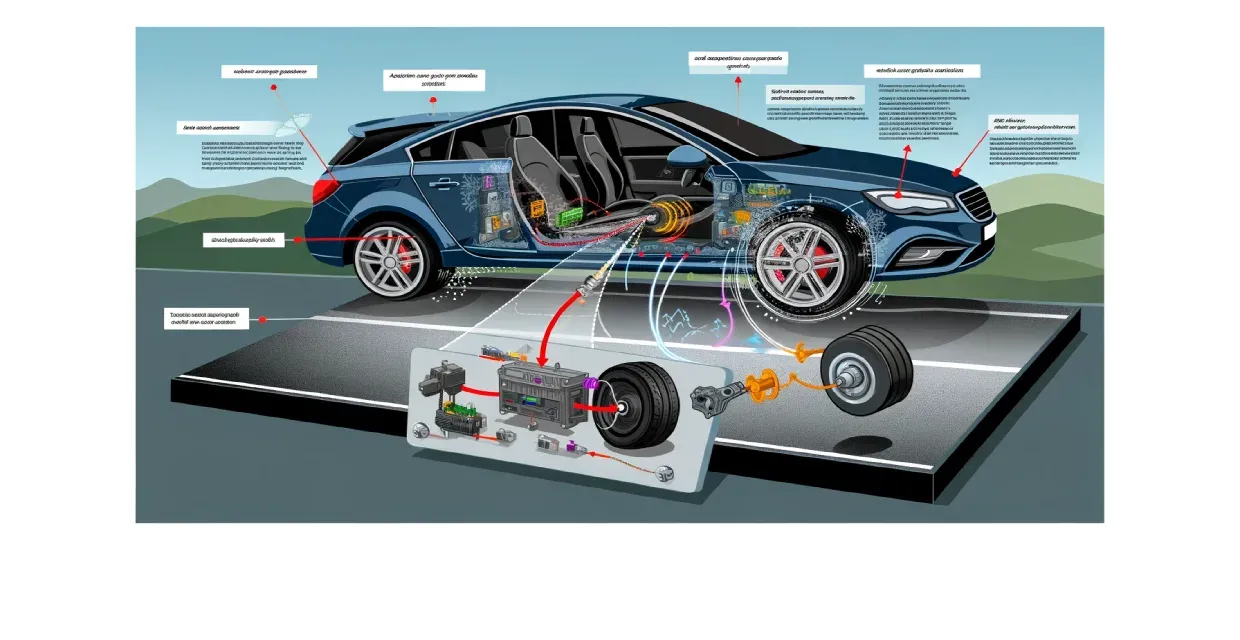

Imagine driving your car on a rainy day. The roads are filled with water at many places and at others the way is wet. You would definitely be worried about losing control of your vehicle right? Here TCS technology comes into play. It's as if your tyres have an angel watching over them. When it detects that one wheel is turning at a quicker rate than the others, it may be slipping.
Traction Control System, which is often referred to as TCS, is a technology used in cars, to detect and keep a check on wheels losing their grip on any road. It is equipped with measures to automatically correct the problem, once detected, to ensure the car’s stability. An unsteady vehicle poses a significant safety risk if its wheels do not maintain a secure grip on the road. When it rains or the roads are slippery or icy, traction loss like this is normal.
Also Read:- Fuel Efficient Tyres in India
TCS consists of several key components to ensure that your drive is safe. Let us take a look at each of them.
Wheel Speed Sensors: Meant to work as the receptors and trackers, they are located at each wheel and help in measuring the speed of rotation of each wheel.
Electronic Control Unit: ECU or the electronic control unit, is the brain of the whole system. It controls the decision making part based on the data received via the sensors. The decision involves whether and how to intervene, so that the wheel is in control again.
Hydraulic Modulator: This component is the actor of the system. Responsible for applying brake pressure on individual wheels, the modulator works according to the commands of the ECU. This is how wheels regain traction.
Also Read:- Types of Car Chassis
The basic principle behind the working of TCS is “detect and act”. The sensors attached to each wheel keep a check for wheel slips. If detected, i.e. one of the wheels spinning faster than the other, the ECU kicks in and asks the Hydraulic Modulator to apply brakes, only to that specific wheel, or in a specialised combo, to avoid further slipping.
Tracking Control Systems have a specific place in the dashboard, in the form of TCS light. The TCS light, usually yellow in colour, is on at most of the times. When the TCS light flashes during acceleration, it signals low friction on the road, common in snowy or icy conditions. But if it flashes on a dry road when you slow down, it can mean the ABS sensor isn't working properly.
If the TCS light shows an OFF sign, it means the system is deactivated. It is recommended that you consult the vehicle handbook in order to resolve this issue.If the traction control system (TCS) light stays on, it could be an indication of an ABS or traction control system malfunction that needs a mechanic's check or code reading. Some of the common causes for failure include, wiring issues, problems with magnetic rings, water damage to sensors , or ABS control unit failure.
Also Read:- Best way to protect your car During Winters
Traction Control Systems, apart from controlling the skidding of your vehicle, bring a lot of benefits onboard. Here are a few to help you out:
Enhanced Safety: The main reason why these kinds of technologies exist is due to safety. TCS helps maintain control over the vehicle , thereby reducing the risk of accidents, especially in adverse weather conditions.
Improved Stability: Vehicle stability is a very important factor while driving. If an unbalanced vehicle due to improper air pressure can lead to disasters, imagine what would happen if a vehicle skids or slips.
Better Performance: With TCS, drivers can experience smoother acceleration and better handling, even in challenging driving conditions.
Also Read:- How to Choose the Best Cleaning Products for your Car
With some benefits, come some limitations as well. While the technology has matured to a large extent, there is always a scope for improvement.
Limited Effectiveness on Ice: Traction Control Systems are not as effective on ice. On slippery surfaces, the traction is severely compromised and hence TCS is not much of a help.
Driver Awareness: TCS is just a tool to assist. This does not mean that the driver can drive recklessly on slippery roads, without any worry. Hence being extra cautious, will save lives, literally.
Also Read:- How to Drive a Car in Heavy Fog?
Traction Control Systems in most of the cars is combined with the Electronic Stability Program or ESP in order to enhance vehicle stability. The selective intervention by ESP can help apply the brakes only when needed, and hence maintain control in critical situations. The fact that TCS is compatible with the Anti-lock Braking System (ABS) and uses its components as well as basic principles further enhances the safety of your car.
Also Read:- Best Cars for Long Distance
The revolutionary traction control system has changed the way we drive forever. It's a basic technique that's incredibly effective at keeping us safe on the road in all weather. So the next time you hit the road on a rainy day or navigate a slippery corner, take comfort in knowing that TCS has got your back. It's like having a trusted companion by your side, ready to lend a helping hand whenever you need it most.